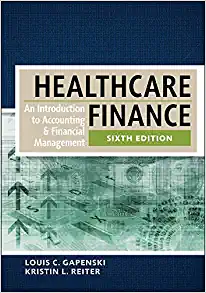Question
This is a more challenging problem to give you some insight into the convexity adjustment for Eurodollar futures. As in question 3., you will approximate
This is a more challenging problem to give you some insight into the convexity adjustment for Eurodollar futures. As in question 3., you will approximate daily settlement by just one intermediate payment. Don't be too over- whelmed. Just follow the steps and you'll get the answer.
Consider a standard three-month Eurodollar futures contract with two months to delivery. Instead of daily settlement, suppose payments are made to or taken out of your margin account only once one month from now (halfway between today and settlement). Furthermore, as you will need to price risky cash flows, for this problem we will assume you are risk-neutral.
Today, your 1-month zero rate (for discounting) is 1% per annum with continuous com- pounding. In one month, this goes up to 1.5% or goes down to 0.5% (both p.a. with continuous compounding), each with 50% probability. If after one month the rate has gone up to 1.5%, the Eurodollar rate a month later (at settlement of the futures contract) will either be 1% or 2% (both expressed p.a. with quarterly compounding as used in the futures contract), each with 50% probability. If after one month the rate has gone down to 0.5%, the Eurodollar rate a month later will be either 0% or 1% (again, p.a. with quarterly compounding), each with 50% probability.
3
Remember that Eurodollar futures are quoted as 100 R, where R is the three-month Eu- rodollar rate expressed as a percentage p.a. with quarterly compounding. In this problem, this means that the final settlement prices are 100 (0%), 99 (1%), and 98 (2%). Also, remember that the notional is set so that for every one basis point (0.01) increase in the futures price, $25 is gained in the margin account.
(a) (4 points) Calculate the futures price after one month (the intermediate point) if interest
For notation: let F1 denote the futures price after 1 month if the interest rate goes up to 1.5%, F 1 denote the futures price after 1 month if the interest rate goes down to 0.5%, and F0 denote the futures price today. Remember that futures prices and forward prices should be set so that the contracts have zero value to you. With risk-neutrality, this means that the discounted expected value should always be zero.
rates go up to 1.5% (F1).
contract at delivery if R = 2% (settlement price is 98) and R = 1% (settlement price is
99). Each possibility happens with a 50% chance, so the expected payout is the average of
these two payouts. Discount this by one month to get the discounted expected value at the
intermediate point. You are risk neutral, so this is discounted expected value is the value
of being long this contract to you at this one month (intermediate point) if interest rates go
- (b)(4 points) Calculate the futures price after one month (the intermediate point) if interest rates go down to 0.5% (F 1 ).
- (c)(4 points) Using your answers to (a) and (b), calculate the futures price today (F0).
- Hint: the strategy here is the same. Let F0 denote the futures price today, and find the two possible payouts one month from now (the intermediate date). Find the expected discounted value, and set this equal to zero to solve for F0.
- As a slight simplification (forward rate agreements do not have this actual payoff, but this
is easier), suppose a forward rate agreement (FRA) was exactly the forward equivalent of the
Eurodollar futures. FRAs have prices quoted as actual interest rates (annual, with quarterly
compounding), and not as 100 minus the interest rate. Let r denote the forward rate agree- 0
ment"price"(interestrateofferedbytheFRA).Wewillassumethepayoffis$250,000(r 0
2
Hint: The approach here is similar. Start by considering things 1 month from now in both
cases (interest rates go up or down). For each case, compute the two possible payouts two
months from now (in terms of the unknown r ), and use these to compute the expected 0
payouts. Discount by the appropriate 1 month rates to get the value of being in this contract
in both possible cases. (Remember, this is a value and not paid out in cash. This is a forward
contract, so no payments are being made.). Then, take the average of these two values, and
discount this once more to go back from one month out to today. If you did things correctly,
you should have that the value of this contract at time 0 is 249584r 2495.32. Set this value 0
to zero to compute r . 0
(e) (3 points) You should have obtained r < 1% and F = 99 which corresponds to a futures 00
rate of 1%. Explain in two-three sentences why the forward rate is lower. (Hint: are large
eventual payoffs discounted more or less?)
Step by Step Solution
There are 3 Steps involved in it
Step: 1

Get Instant Access to Expert-Tailored Solutions
See step-by-step solutions with expert insights and AI powered tools for academic success
Step: 2

Step: 3

Ace Your Homework with AI
Get the answers you need in no time with our AI-driven, step-by-step assistance
Get Started


